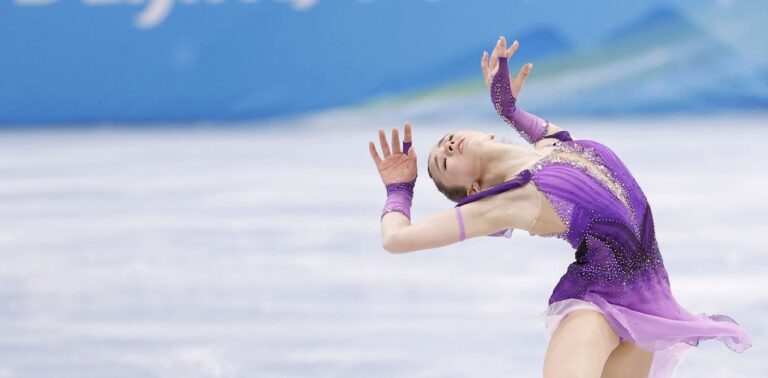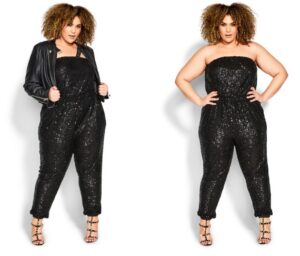For ice skating, wear warm and comfortable clothes with layers and don’t forget your gloves and socks. Ice skating is a popular sport that requires proper attire to ensure comfort and safety on the ice.
Whether you are a beginner or a seasoned skater, knowing what to wear is essential for an enjoyable experience. The right clothing will help regulate your body temperature and protect you from the cold and potential falls. Layers are key, as they allow you to adjust your clothing according to the rink’s temperature and your level of activity.
Additionally, make sure to wear warm and comfortable socks to keep your feet cozy and well-insulated. Don’t forget to bring gloves to protect your hands from the cold and potential accidents. By dressing appropriately for ice skating, you can fully enjoy the activity without any discomfort or risk.
Essential Clothing And Accessories For Ice Skating
Comfortable Apparel for Optimal Movement
When ice skating, it is important to wear comfortable clothing that allows for optimal movement. Opt for layers, so you can adjust according to the temperature of the ice rink. A lightweight, moisture-wicking base layer is essential to keep you dry and comfortable throughout your skating session. Consider wearing stretchy leggings or pants that allow for ease of movement. On top, choose a fitted long-sleeved shirt or a sweatshirt made from breathable material. This will provide warmth without restricting your arms.
Appropriate Outerwear for Warmth and Protection
For outerwear, a warm and water-resistant jacket is key to protect yourself from the cold and potential moisture on the ice. Look for a jacket with insulation to keep you warm and a hood for added protection. Additionally, don’t forget to wear gloves or mittens to keep your hands warm and protected from the elements. Opt for a pair that allows for dexterity and grip, as you will need to maintain balance and maneuver on the ice.
Proper Footwear for Safety and Balance
The right footwear is crucial for ice skating, as it ensures safety and balance on the slippery surface. Invest in a pair of well-fitting, lace-up ice skates that provide ankle support and a secure fit. Ice skates should be sharpened regularly to maintain their effectiveness. It is recommended to wear thin, moisture-wicking socks to keep your feet dry and reduce the risk of blisters. Remember to tie your skates tightly for a snug fit, but make sure they are not too tight to restrict blood circulation.
Choosing The Right Fabrics And Materials
Choosing the right fabrics and materials is essential when it comes to dressing appropriately for ice skating. Layering with breathable fabrics offers several benefits. Firstly, it allows for better temperature regulation, keeping you comfortable and avoiding overheating. Secondly, it helps in moisture management, drawing sweat away from the skin and preventing the buildup of moisture. Wool and fleece, known for their insulating properties, are excellent choices for base layers as they provide warmth without being bulky. Additionally, investing in waterproof and windproof materials for outer layers is crucial. These materials act as a barrier against the cold wind and prevent water from seeping through, keeping you dry and protected from the elements. By choosing the right fabrics and materials, you can enjoy your ice skating experience to the fullest, without compromising on comfort and safety.
Stylish And Practical Winter Accessories
When heading out for ice skating, it’s important to dress appropriately to stay warm and stylish. Hats, gloves, and scarves are must-have winter accessories that can add both functionality and fashion to your outfit. Opt for wool or fleece materials to provide maximum insulation and keep you cozy on the ice. Look for hats that cover your ears to protect them from the cold. Knit or thermal gloves will keep your hands warm while allowing flexibility for movement. Scarves not only keep your neck warm but also add a trendy touch to your overall look.
In addition to the classic accessories, consider ear muffs and neck gaiters. Ear muffs are both functional and fashionable, providing extra protection against the cold wind. They come in various styles and materials, so you can choose the one that suits you best. Neck gaiters, also known as neck warmers or snoods, are trendy alternatives to traditional scarves. Made from soft and thermal fabrics, they keep your neck and lower face warm while allowing you to move freely.
Finding The Perfect Bottom Wear
Ice skating is a popular winter activity, and finding the perfect outfit is crucial for a comfortable and stylish experience. When it comes to bottom wear, there are several optimal options to consider. Skaters who prefer a sleek and streamlined look often choose stylish leggings and tights. These form-fitting bottoms allow for ease of movement and can be paired with a variety of tops. For those who prefer a more feminine and flirty look, skirts and dresses are great choices. Opt for skirts that are not too long to avoid any interference with your skating. Dresses with a flared skirt can add a touch of whimsy to your ensemble. Consider pairing your skirt or dress with leggings or tights for warmth during colder sessions. Regardless of your preference, make sure to choose bottoms that allow for flexibility and comfort on the ice.
Selecting The Ideal Upper Wear
htmlWhen heading out for a day of ice skating, it’s essential to choose the right upper wear to keep yourself warm and comfortable. Whether you’re a casual skater or a sports enthusiast, finding the ideal clothing is key to enjoying your time on the ice.
| Cozy Sweaters and Hoodies | Lightweight Jackets and Vests | Sporty Long-Sleeve Shirts |
|---|---|---|
| Opt for cozy sweaters and hoodies to stay warm as you glide across the ice. These garments provide insulation and can be layered with other clothing items. | If you prefer a more versatile option, lightweight jackets and vests are perfect. They offer warmth without restricting movement, allowing you to skate freely. | For those who engage in intense athletic skating routines, sporty long-sleeve shirts are an excellent choice. They offer breathability and flexibility, ensuring you stay comfortable during rigorous movements on the ice. |
Remember, it’s important to choose clothing that allows freedom of movement and provides warmth. Dressing in layers is also advisable, as it allows you to adjust your clothing as needed throughout the day. Now that you’re aware of the ideal upper wear options, you can confidently enjoy your ice skating adventure!

Credit: www.inquirer.com
Dressing For Different Ice Skating Environments
Ice skating is a popular winter activity, but figuring out what to wear can be a challenge. Dressing appropriately for different ice skating environments is important to ensure comfort and safety.
For outdoor ice rinks, casual outfits are suitable. Opt for warm and comfortable clothing, such as thick sweaters, jeans or leggings, and thermal socks. Layering is key to stay warm, so consider wearing a waterproof jacket or coat over your sweater.
When skating at indoor rinks, it’s best to wear attire that is specifically designed for ice sports. Dress in flexible and breathable clothing, like athletic leggings or pants, and a fitted long-sleeved shirt or sweatshirt. Don’t forget to bring a pair of clean, well-fitting socks to wear with your ice skates.
| Outfit | Accessories |
|---|---|
| A figure skating dress or skirt with tights | Matching gloves |
| Leotard and tights | Leg warmers |
| Specialized figure skating pants or leggings | Hair accessories |
For figure skaters, there are some additional considerations. Figure skating outfits can be elegant and glamorous, with dresses, skirts, leotards, and tights being popular choices. Accessorize with gloves, leg warmers, and hair accessories to complete the look.
Remember, whether you’re skating outdoors or indoors, it’s important to dress in layers and wear appropriate clothing to stay warm and comfortable. So, choose your ice skating attire wisely and enjoy your time on the ice!
Styling Tips And Inspiration For Ice Skating Outfits
When getting dressed for ice skating, it’s important to consider both style and functionality. Incorporating winter colors and patterns can add a festive touch to your outfit. Think of deep blues, icy whites, and sparkling silver or gold accents. To add interest, try mixing different patterns like snowflakes, plaid, or fair isle. Layering is key to staying warm on the ice, so experiment with different techniques. Start with a thermal base layer, add a cozy sweater or fleece, and top it off with a waterproof jacket. Don’t forget to wear appropriate bottoms like thermal leggings or fitted pants. Accessorizing will complete your look and also serve a practical purpose. Opt for a warm hat, gloves, and a scarf to protect yourself from the cold.
Safety Precautions And Recommendations
Safety Precautions and Recommendations:
- Wearing Helmets for Extra Protection: It is highly recommended to wear a helmet while ice skating, especially for beginners or those participating in more aggressive skating activities. Helmets can provide an extra layer of safety and protection for your head in case of falls or collisions.
- The Importance of Warm Socks and Gloves: When ice skating, it is crucial to wear warm socks and gloves to prevent discomfort and frostbite. Thick, thermal socks will keep your feet insulated and protect them from the cold ice, while gloves will keep your hands warm and provide a better grip on the ice.
- Avoiding Loose or Baggy Clothing: It is important to avoid wearing loose or baggy clothing while ice skating. Loose clothing can get caught in the blades of your skates and cause accidents or falls. Opt for fitted clothing that allows freedom of movement without being too tight or restrictive.
Maintaining Your Ice Skating Wardrobe
When it’s time for ice skating, it’s important to have the right wardrobe to stay comfortable and safe on the ice. Maintaining your ice skating wardrobe is essential to ensure its longevity and performance. Caring for performance fabrics is crucial to keep them in top shape. These fabrics are designed to wick away moisture and provide optimal stretch, so proper care is key. Always check the garment’s label for specific instructions, but in general, machine washing and drying should be avoided to prevent damage. Instead, hand washing with a gentle detergent and air drying is recommended. Storing gear properly is another important aspect to extend its lifespan. Hanging your gear in a cool, dry place is ideal, as it helps prevent mildew and odors. Lastly, regularly cleaning your ice skating apparel is essential. Wiping down your skates and equipment after each use and spot cleaning any stains will keep everything looking and smelling fresh. By following these tips, you can ensure that your ice skating wardrobe stays in great condition and ready for every skate.
Frequently Asked Questions On What To Wear Ice Skating
What Should I Wear For Ice Skating?
For ice skating, it is important to dress warmly. Wear layers, including a thermal top, sweater, and jacket, to trap heat. Opt for comfortable, flexible pants and thick socks. Don’t forget a hat, gloves, and scarf for additional warmth.
Do I Need Special Shoes For Ice Skating?
Yes, you will need special shoes called ice skates for ice skating. Ice skates have blades attached to their soles, allowing you to glide smoothly on the ice. Make sure to rent or buy the right size and properly tie your laces for a secure fit.
What Kind Of Socks Should I Wear For Ice Skating?
It is recommended to wear thick and warm socks for ice skating. Wool or thermal socks are great choices as they provide insulation and keep your feet warm, even in cold temperatures. Avoid wearing thin or cotton socks as they may not provide enough warmth and can lead to discomfort.
Conclusion
To conclude, dressing appropriately for ice skating is essential for both comfort and safety. By wearing warm and layered clothing, thick socks, and proper footwear, you can enjoy your time on the ice without feeling cold or risking injury. Remember to prioritize comfort and flexibility in your outfit choices, and don’t forget to bring a helmet and gloves for added protection.
So, next time you hit the ice, dress smart and have a great skating experience!





